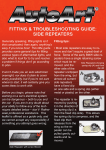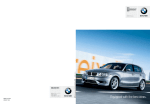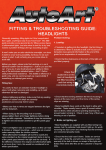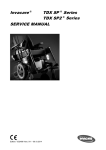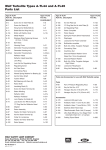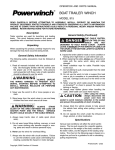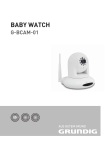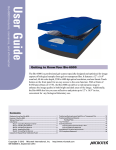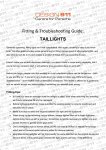Download FITTING & TROUBLESHOOTING GUIDE: INDICATORS
Transcript
FITTING & TROUBLESHOOTING GUIDE: INDICATORS Generally speaking, fitting lights isn’t that complicated; then again, anything’s easy if you know how! This little guide provides some general tips for fitting various types of aftermarket lights, and also what to look for to try and resolve a problem if things don’t go according to plan. It won’t make you an auto electrician overnight, nor does it claim to cover every possibility, but if you’re not sure where to start, it will certainly give you some ideas to work with. Before you begin, please note that working on a car’s electrical system can be dangerous – both to you and the car. If you are in any doubt about your ability to follow any of the techniques detailed below – don’t! Rather seek professional assistance. This leaflet is offered as a guide only, and we cannot accept any responsibility if something you attempt goes wrong. Fitting tips: there may be others as well) and will benefit from the application of a little dishwashing liquid or petroleum jelly to the locating rails before they are fitted. • A little lubrication on the locating rails (arrowed) will help an indicator slot into position easily Excessive force can easily damage the lens, and usually results in a crack down the outside, which is obviously not going to be covered by warranty. • Some indicators are notorious for being a very tight fit (those for the BMW • Some indicators are supplied without bulbholders; these will need to be E36 models and the Mercedes R129 transferred over from the original units. SL spring immediately to mind, but Problem Solving: 1. Leaking: • If moisture is getting into the indicator, the first thing is to determine if there is actually a leak or if it’s just condensation (see under general for an explanation of condensation). • The indicator should be removed from the car and the bulbholder taken off. • To test the indicator for leakage, you have two options: Either fill it with water and hold it bulbholder side up to see if any escapes; or place your lips over the bulbholder - clean it thoroughly first – and sealing the holder off with • Always remember - excessive force your mouth, blow into the indicator should not be required. If you’re applying lots of pressure and nothing’s while checking around the edges where happening, stop and make sure you’re the lens meets the housing to see if air pushing in the right direction before you comes out anywhere. break something! • If either of the above tests prove negative, the indicator itself is not faulty, and the problem is either just condensation or a problem with the seal/o-ring between the bulbholder and the socket. Transferring over an indicator bulbholder Indicator bulbholder with o-ring • Check the bulbholder and ensure that it is not damaged in any way, that it fits into the socket securely (and has been fitted correctly and turned all the way until it locks - but don’t overtighten as damage can result) and that the o-ring/ seal is not damaged or missing. • Some indicator units have vents on the back to allow condensation to evaporate. They often have a Ushaped rubber pipe on them. If they are present, check that the open end of the pipe is facing sideways or downward, and not upward, as this could allow water to run into the unit. Rear of Indicator showing vent pipes 2. Item doesn’t fit: • This is usually because you have the wrong part for the car (doh!), either because it has been ordered or supplied incorrectly. Double check the fitment details in the catalogue listing and contact your dealer for clarification if you’re unsure. GENERAL INFORMATION The basic scientific explanation is this: There is always some moisture in the air, and warm air can hold more moisture than cold air. When the air inside the light unit – which is warmed by the heat from the bulbs – touches the inside of the lens (which is at a lower temperature because it is in contact with the colder air outside), the layer of air against the inside of the lens cools down as well, and as a result it can no longer retain the moisture it is holding, which is deposited on the inside of the lens to form condensation. The condensation will only disappear once the air inside the light unit warms up enough to absorb the moisture again, and in winter this can take some time. Condensation is NOT indicative of a fault with a light unit, and as such it isn’t accepted as a reason for a warranty return. Condensation occurs in original equipment lights as well, but aftermarket • Know your left from your right: lights often have clear lenses without References to left-hand & right-hand any patterns, so the condensation is are as viewed by someone sitting in the more obvious. On a patterned original driver’s seat. equipment lens it might not be visible at all unless one looks closely. • What exactly IS condensation? Condensation is caused by water vapour in the air. The moisture on the windows inside your house in winter is While the above information is offered in good faith and is believed to be correct, neither condensation – and when that AutoArt nor any of its dealers can accept any rehappens, you don’t start looking for sponsibility for any consequences, howsoever leaks in your windows do you? (You’ll caused, resulting from the application of any of be a long time if you do). In exactly the the information detailed in this leaflet. same way, condensation inside a light Copyright 2009 AutoArt Styling Limited. unit is hardly ever caused by a leak. Unauthorised duplication/distribution prohibited.



